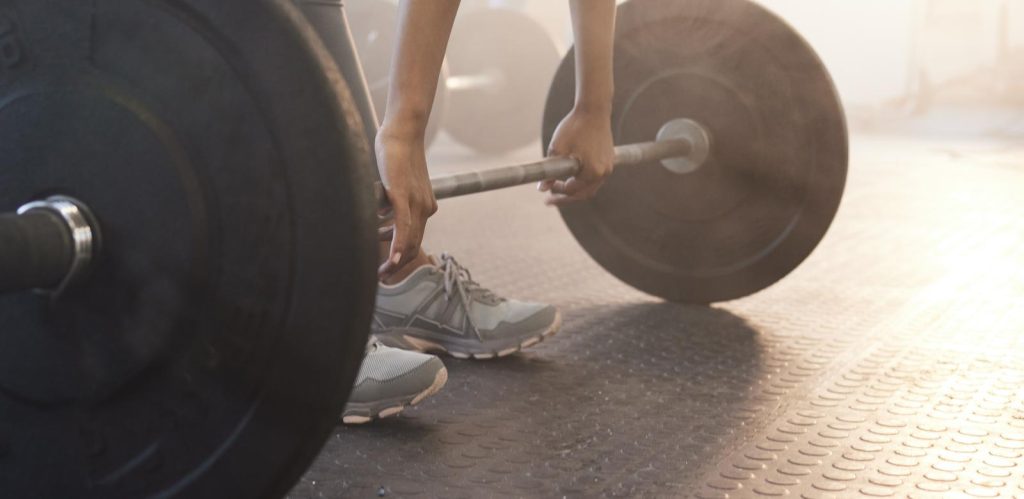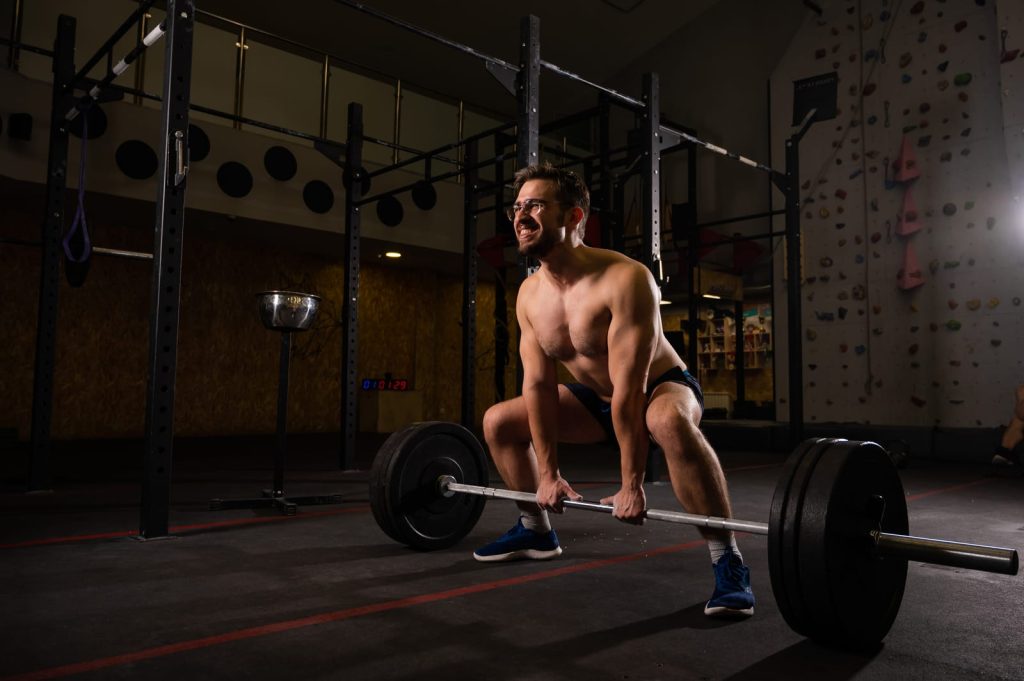Are you tired of doing the same old squats and lunges to work out your glutes and hamstrings? Have you ever heard of the stiff-leg deadlift?
The stiff leg deadlift is a great exercise to add to your workout routine if you’re looking to target your hamstrings, glutes, and lower back. However, many people shy away from this exercise because they believe it’s too difficult or they don’t know how to do it properly.
Despite its intimidating name, the stiff leg deadlift is a fantastic exercise that can help you build strength, improve your form, and prevent injury. In this article, we’ll break down the proper technique for performing this exercise and provide some tips on how to incorporate it into your workout routine.
Contents
How To Perform Stiff Leg Deadlift
A. Starting Position
Stand with feet hip-width apart: Begin by standing with your feet hip-width apart, toes pointing forward, and the barbell resting on the floor in front of you.
Place hands on the bar with a pronated grip: Reach down and grab the bar with a pronated grip (palms facing down), hands slightly wider than shoulder-width apart.
Maintain a neutral spine: Before lifting the bar, ensure that your back is straight and your core is engaged, with your shoulders pulled back and down.
B. Movement
Hinge at the hips and lower the bar down the legs: Keeping your back straight, hinge at the hips and lower the bar down your legs, maintaining a slight bend in your knees. Be sure to keep the bar close to your body throughout the movement.
Keep the knees slightly bent and the back straight: As you lower the bar down your legs, keep your knees slightly bent and your back straight to prevent rounding or arching.
Feel the stretch in the hamstrings and glutes: As you lower the bar down, you should feel a stretch in your hamstrings and glutes.
Pull the bar back up to the starting position: Once you have lowered the bar as far as you can while maintaining proper form, pull the bar back up to the starting position by driving your hips forward and squeezing your glutes. Exhale as you come back up.
Common Mistakes Of Stiff Leg Deadlift
To ensure proper form and technique, it’s important to avoid the following common mistakes:
- Rounding the back – rounding your back during the exercise can place excessive stress on your lower back and may lead to injury. Be sure to keep your back straight and maintain a neutral spine throughout the entire movement.
- Locking out the knees – locking out your knees can cause hyperextension and increase the risk of injury. Instead, keep your knees slightly bent to maintain a safe range of motion.
- Using too much weight – using too much weight can compromise your form and lead to injury. Start with a light weight and gradually increase the weight as you progress.
- Improper grip – using an improper grip can cause the bar to slip out of your hands and lead to injury. Make sure to use a pronated grip and grip the bar tightly.
Variations Of Stiff Leg Deadlift
There are several variations of the stiff leg deadlift that you can incorporate into your exercise routine to target different muscle groups and add variety to your workouts:
A. Romanian Deadlift
This variation is similar to the stiff leg deadlift, but the knees are slightly bent. This modification allows for a greater range of motion and places more emphasis on the hamstrings and glutes.
To perform a Romanian deadlift, start in the same position as a stiff leg deadlift and hinge at the hips while bending your knees slightly. Keep your back straight and lower the bar down your legs until you feel a stretch in your hamstrings. Return to the starting position by contracting your hamstrings and glutes.
B. Sumo Deadlift
This variation involves a wider stance and a neutral grip. The sumo deadlift targets the inner thighs and glutes to a greater degree than the traditional stiff leg deadlift. To perform a sumo deadlift, stand with your feet wider than shoulder-width apart and your toes pointed outward.
Position your hands on the bar with a neutral grip, and hinge at the hips while keeping your back straight. Lower the bar down your legs while driving your knees outward. Return to the starting position by contracting your inner thighs and glutes.
C. Single-Leg Deadlift
This variation is performed with one leg, which challenges your balance and stability while targeting your hamstrings, glutes, and core. To perform a single-leg deadlift, stand on one leg with a slight bend in your knee.
Hold the bar with both hands and hinge at the hips while keeping your back straight. Lower the bar down your leg while lifting the opposite leg behind you. Return to the starting position by contracting your hamstrings and glutes.
D. Deficit Stiff Leg Deadlift
The Deficit Stiff Leg Deadlift involves standing on a raised platform, like boxes, and lowering the weight down below the level of the platform. This variation of the stiff-legged deadlift puts more emphasis on the hamstrings and glutes while requiring more range of motion.
Tips For Success
To ensure success with the stiff leg deadlift, follow these tips:
- Start with light weight – it’s important to start with a weight that allows you to maintain proper form and technique. Gradually increase the weight as you progress.
- Focus on form and technique – proper form and technique are crucial to avoid injury and maximize the benefits. Focus on maintaining a neutral spine, keeping your knees slightly bent, and feeling the stretch in your hamstrings and glutes.
- Progress gradually – don’t rush to increase the weight or repetitions. Progress gradually and listen to your body to avoid injury and ensure long-term progress.
- Incorporate into a well-rounded exercise program – the stiff leg deadlift is a great exercise, but it’s important to incorporate it into a well-rounded exercise program that targets all major muscle groups. This can include exercises such as squats, lunges, and upper body exercises.
Wrapping Up
The stiff leg deadlift is a great exercise for targeting the hamstrings, glutes, lower back, and core. By following the proper technique and avoiding common mistakes, you can maximize the benefits of this exercise while avoiding injury. Additionally, incorporating variations and following the tips for success can help you progress and achieve your fitness goals. So go ahead and give the stiff leg deadlift a try and see the difference it can make in your strength training routine!



